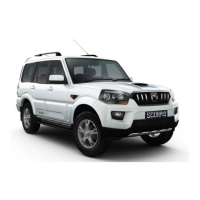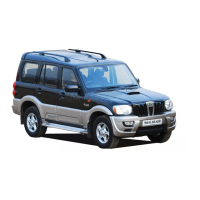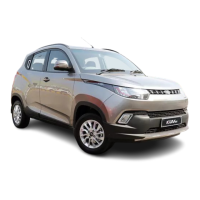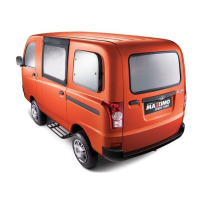© Copyright Mahindra & Mahindra Ltd. 082014
11-5
Uphill and Downhill Driving
To prevent the engine from laboring at a low RPM when driving uphill gradients or
with your vehicle heavily loaded, downshift when necessary to maintain engine RPM
within the best torque range. Similarly while driving downhill, downshift to utilize the
engine braking in an optimum manner.
When stopping the vehicle on an uphill gradient, do not hold it with the clutch/
accelerator; use the brake to avoid unnecessary clutch wear/heat buildup.
When parking on an incline, gear alone may not be sufficient to prevent the
vehicle from moving. Always set the parking brake in addition to shifting the
gear shift lever into gear. It is also recommended to turn the front wheels
towards the curb.
11.6.2 Recommended Gear Shifting Speeds
Shift gears at suitable engine or road speeds to safeguard the transmission
components. Avoid driving in high RPM’s (>3000 RPM).
Always depress the clutch fully before moving the gear shift lever from the current
position to any desired position. Perform up-shifts or down-shifts one gear at a time,
do not jump gears.
Upshifting
Shift Range Vehicle Road Speed (kmph) Engine RPM Range
1–2 20–25
1800–2500
2–3 30–35
3–4 40-45
4–5 50–55
Down-shifting
Shift Range Vehicle Road Speed (kmph) Engine RPM Range
5–4 50-45
1400–1100
4–3 40-35
3–2 30–25
2–1 20–15
11.7 Driving Your Vehicle
11.7.1 General Driving Precautions
When both accelerator and brake pedals are depressed together, the brake
function will override the accelerator input for safety reasons.
Always observe the following precautions to minimize the risk of accidents
leading to serious personal injury or damage to your vehicle
• Before you drive your vehicle, please read this manual carefully
STARTING AND DRIVING THE VEHICLE

